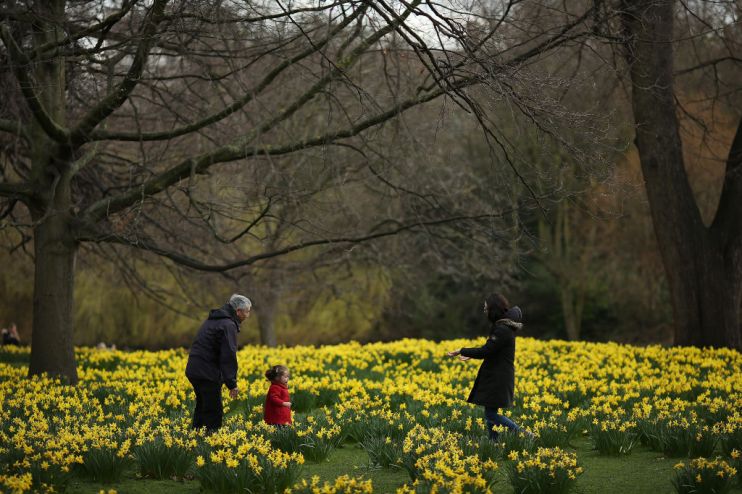London records drop in coronavirus prevalence as infection rate holds steady

The percentage of Londoners testing positive for coronavirus has fallen in the past week, latest official figures showed, as Covid cases continue to decline across the country.
The Office for National Statistics’ (ONS) latest infection survey estimated that the proportion of people in the capital testing positive for coronavirus fell to 0.3 per cent last week — down from 0.5 per cent in the seven days to 26 February.
It means the capital sits among the North West and East of England and the East Midlands as having the lowest coronavirus prevalence rates in England.
The West Midlands and Yorkshire and the Humber currently have the highest percentage of people testing positive for the virus, with an estimated 0.5 per cent of people thought to have been infected last week.
London’s rate of infection held steady over the past seven days, in a welcome reversal of separate data released last week that suggested cases may be rising.
London’s R rate now stands at a best estimate of 0.6 to 0.8, according to the latest data from NHS England. It means infections in the capital are slowing anywhere between four and eight per cent each day.
The UK R rate also fell to 0.6 to 0.8, subduing concerns raised by last week’s slight increase.
One in 270 people in England are estimated to have been infected with coronavirus in the first week of March — equivalent to around 200,600 people, according to the ONS.
The figure marks a significant drop from last week’s estimates, which showed around one in 220 people had the virus in England — equivalent to around 248,100 people.
It also marks the lowest figure since in more than five months, when 116,600 people were estimated to have the virus in late September.
The figures will come as a major boost to the Prime Minister, who has insisted the government will prioritise “data not dates” in plans to lift lockdown restrictions.
Boris Johnson said there was “no credible route to a zero-Covid Britain or indeed a zero-Covid world,” but that the roadmap would provide a “cautious but irreversible” timeline for easing current lockdown measures.
Professor Chris Whitty, England’s chief medical officer warned earlier this week that a third wave of coronavirus is almost inevitable despite the speed of the vaccine rollout.
He said that even under the most optimistic set of assumptions a further 30,000 people will likely die from Covid-19.
“We hope it doesn’t happen soon, it might for example happen later in the summer if we open up gradually or because of the seasonal effect it might happen over the next autumn and winter,” Whitty added.
He resisted calls to speed up the lifting of lockdown restrictions, as he warned that the size and timing of a resurgence would depend on the speed of reopening society.
Pubs, restaurants, cafes and bars are set to reopen in just one month’s time under the PM’s roadmap for exiting lockdown.
All non-essential shops, hair salons, gyms, swimming pools, and indoor sports facilities will also reopen from 12 April at the earliest, alongside museums, galleries, and libraries.
Staycations will also be back on the cards from mid-April, when self-catered accommodation will be allowed to resume.
However, Welsh First Minister Mark Drakeford today confirmed that people in England will not be allowed to holiday in Wales when self-catered accommodation reopens at Easter.
Drakeford told BBC Radio 4’s Today programme that rental business owners should not be taking bookings from people who live outside Wales, and warned that he will hold discussions with Welsh police “to see if there is anything we need to do to mobilise our own enforcement authorities”.
The government will conduct a review into the threat from emerging variants which it will report on 12 April. The review could pave the way for foreign holidays abroad this summer, which could enable people to travel abroad as soon as 17 May.